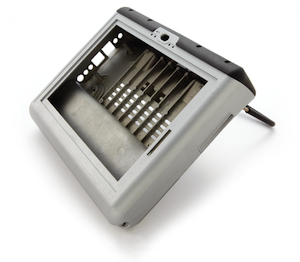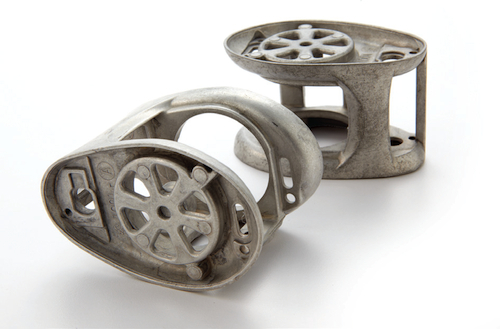Once known as an arduous and sometimes unpredictable process, magnesium injection molding is now an established technology. When the magnesium element is combined with small percentages of aluminum and zinc (AZ91D), and aluminum and manganese (AM60B), the alloy can be used to produce durable, lightweight parts. Products made with magnesium are also environmentally friendly, 100% recyclable, and beneficial in conserving energy and helping to meet CAFE requirements.

Magnesium components are 20-times stiffer than typical thermoplastics and resist impact. Lighter in weight, magnesium is one-third the weight of steel and zinc and two-thirds the weight of aluminum.

Phillips can deliver molded shot weight as heavy as 4.5 pounds (1816 grams) and as low as 0.011 pounds (5 grams). The industry standard minimum shot size is 0.143 pounds (65 grams)
You can mold parts with wall thickness of 0.060 in. – 0.080 in. But some service providers, like Phillips, can achieve either much thinner and much thicker sections of parts. Magnesium lets you create complex geometries without machining, and you can take advantage of high cavity-to-cavity repeatability.

Molds can be built with vacuum assist to eliminate trapped air in the mold.
Housings and enclosures made of this material are electrically conductive and provide effective EMI shielding without the use of fillers. This material also offers good heat transfer characteristics for assemblies that generate high heat. For parts, with proper conversion coating and proper gasketing, magnesium part assemblies can be effectively sealed for EMI/RFI shielding and extreme environmental conditions.
Magnesium is a dense material, so it resists leakage under pressure without impregnation.
Lastly, Thixomolded parts require less secondary machining than die casting.
Magnesium injection molding can be used for a range of applications. In medical, you can create injection-molded components such as device housings, display enclosures, heat sinks, battery covers, and internal locking mechanisms. In military applications, it can be found in rugged laptops, chemical detection units, optics components, communication devices, and aircraft artillery launching components. In consumer applications, components range from computer fans, disk drive frames, cell phone housings, and home entertainment systems.
Phillips Plastics Corp.
www.phillipsplastics.com
::Design World::
Filed Under: Cabinets • enclosures • control panels, Molding • injection molding components, Medical-device manufacture, Die casting, Materials • advanced





Tell Us What You Think!